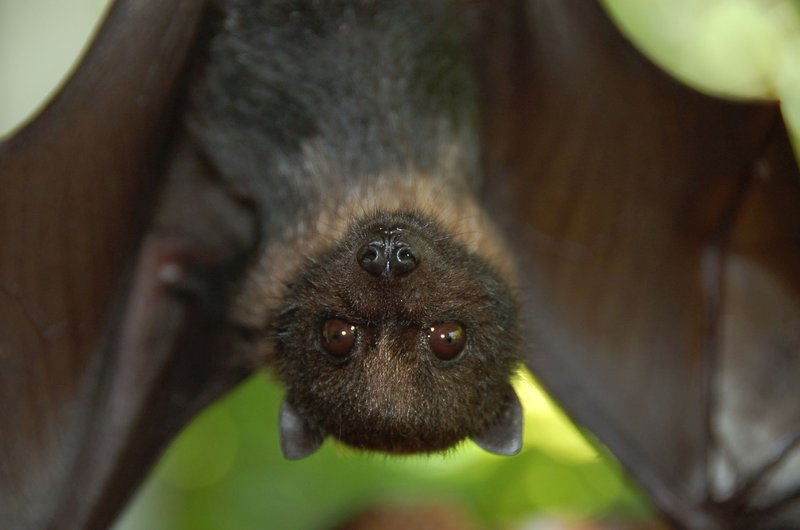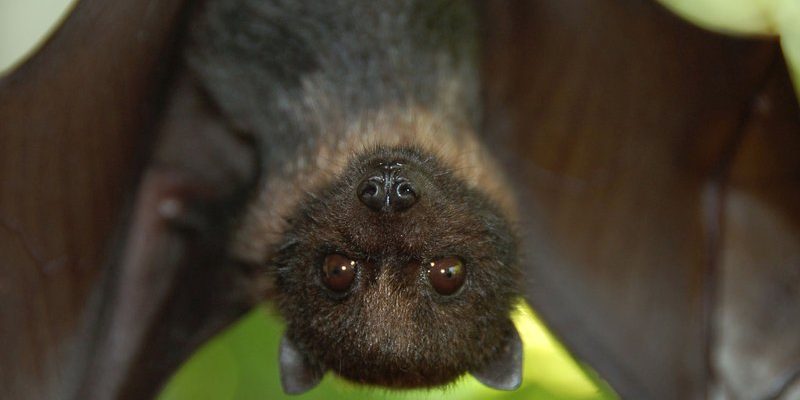
When you encounter a fruit bat, it’s a unique opportunity to witness wildlife up close. But just like you wouldn’t rush up to a moose in the wild, it’s essential to approach these flying mammals with a mixture of curiosity and caution. Let’s dive into what to do if you find yourself in this scenario—because nobody wants to misinterpret a friendly bat for a menacing one.
Understand the Nature of Fruit Bats
Fruit bats, also known as flying foxes, are typically gentle giants of the night. Unlike their vampire relatives, these bats primarily eat fruit, nectar, and flowers. You might’ve heard of their impressive wingspans that can reach up to six feet! But here’s the thing: while they won’t swoop down to attack, they do play a crucial role in pollination and seed dispersal in their ecosystems.
Knowing this helps you appreciate their presence rather than fear it. They may look large and daunting, but they’re actually more interested in munching on tasty fruit than interacting with humans. So, if you spot one hanging out in a tree, it’s usually just taking a break or enjoying a snack.
Identify Their Behavior
When you come across a fruit bat, take a moment to observe its behavior. Are they resting, flying, or foraging? If they’re hanging upside down, this is their relaxed position, much like us lounging on the couch after a long day. But if they take off suddenly, it might be for a reason—perhaps they sense a disturbance nearby or a potential threat.
Understanding what these bats are doing can give you insight into how best to proceed. If they seem calm, you could take a few moments to watch and enjoy the sight. But if they’re agitated or flying erratically, it’s a signal to retreat quietly.
Keep Your Distance
This may sound a bit obvious, but it’s crucial: maintain a respectful distance. Fruit bats are wild animals, and just like you wouldn’t approach a wild deer, you shouldn’t get too close to a bat. Generally, keeping at least 20-30 feet away allows you to enjoy their company without causing them stress.
You might be wondering why distance is so important. Well, getting too close can provoke them, causing them to fly off or, in worst-case scenarios, become defensive. Plus, you want to avoid potential health risks. Bats can carry diseases, so giving them space is best for both you and the bat.
Watch for Signs of Stress
If you notice a fruit bat displaying signs of stress, it’s time to step back. Common indicators include flapping their wings rapidly, vocalizing, or attempting to hide. Think of it like a dog that’s really not in the mood for visitors; no one wants to overstress an animal that’s just trying to exist in its natural habitat.
If you see these behaviors, quietly back away without sudden movements. It’s all about being respectful and recognizing that you’re a visitor in their world.
Document the Encounter Safely
If you’re an animal lover or a budding wildlife photographer, capturing the moment can be tempting. But remember, safety first! Use a zoom lens on your camera or phone so you can snap some beautiful photos from a distance, preserving the moment while keeping a safe space for the bat.
Sharing your experience later can help educate others about these creatures. Maybe you’ll inspire someone else to appreciate wildlife too! Just ensure that your presence is not obstructive, and avoid using flash photography, which can startle the bat.
Leave No Trace
It’s essential to behave responsibly when encountering wildlife. This means leaving the area just as you found it. Don’t leave behind trash or disrupt the environment. Fruit bats often inhabit delicate ecosystems, and your presence should not negatively impact their habitat.
Think of yourself as a temporary visitor in a home that belongs to them. Just as a respectful guest wouldn’t leave a mess in someone’s living room, you shouldn’t alter the nature around you.
Know When to Seek Help
In rare cases, a fruit bat might be injured or in distress. If you come across a bat that seems unwell, don’t try to handle it yourself. Instead, contact local wildlife authorities who can provide assistance. They’ll have the expertise to help the bat safely, ensuring it gets the care it may need.
You might be surprised by how many resources are available for wildlife rescue. Many places have dedicated teams trained to handle these situations. Your call can make a big difference, so don’t hesitate to reach out.
Educate Yourself About Fruit Bats
After your encounter, take some time to learn more about fruit bats. Understanding their role in the ecosystem, their behavior, and their habitats can deepen your respect for these fascinating creatures. You might discover intriguing facts—like how they communicate with one another or how their migratory patterns work.
You can find plenty of resources online or at your local library. Engaging with this information will not only enrich your experience but may lead to a lifelong interest in wildlife conservation.
Connecting With Nature
So, what’s the takeaway here? Encountering a fruit bat can be an unforgettable experience, but it comes with responsibilities. By keeping your distance, observing their behavior, and respecting their habitat, you’re not just a spectator—you’re part of a larger story about living harmoniously with nature.
Next time you’re out exploring, remember that creatures like fruit bats are vital for our ecosystems. They’re not just flying around; they’re helping pollinate plants and disperse seeds. With a little curiosity and respect, you can enjoy these incredible animals in their natural home.
In the end, every wildlife encounter is a chance to connect with the world around us. So, keep your eyes open, stay curious, and who knows? You might just find magic in the skies above.

